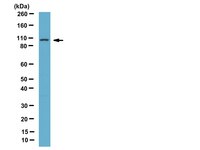AB10520 Sigma-AldrichAnti-DAP-5 Antibody
This Anti-DAP-5 Antibody is validated for use in WB for the detection of DAP-5.
More>> This Anti-DAP-5 Antibody is validated for use in WB for the detection of DAP-5. Less<<Recommended Products
Overview
| Replacement Information |
|---|
Key Specifications Table
| Species Reactivity | Key Applications | Host | Format | Antibody Type |
|---|---|---|---|---|
| H, M | WB | Rb | Serum | Polyclonal Antibody |
| References |
|---|
| Product Information | |
|---|---|
| Format | Serum |
| Control |
|
| Presentation | Rabbit polyclonal serum containing 0.05% sodium azide. |
| Quality Level | MQ100 |
| Applications | |
|---|---|
| Application | This Anti-DAP-5 Antibody is validated for use in WB for the detection of DAP-5. |
| Key Applications |
|
| Physicochemical Information |
|---|
| Dimensions |
|---|
| Materials Information |
|---|
| Toxicological Information |
|---|
| Safety Information according to GHS |
|---|
| Safety Information |
|---|
| Packaging Information | |
|---|---|
| Material Size | 100 µL |
| Transport Information |
|---|
| Supplemental Information |
|---|
| Specifications |
|---|
| Global Trade Item Number | |
|---|---|
| Catalog Number | GTIN |
| AB10520 | 04053252732164 |
Documentation
Anti-DAP-5 Antibody Certificates of Analysis
| Title | Lot Number |
|---|---|
| Anti-DAP-5 - NRG1659210 | NRG1659210 |















